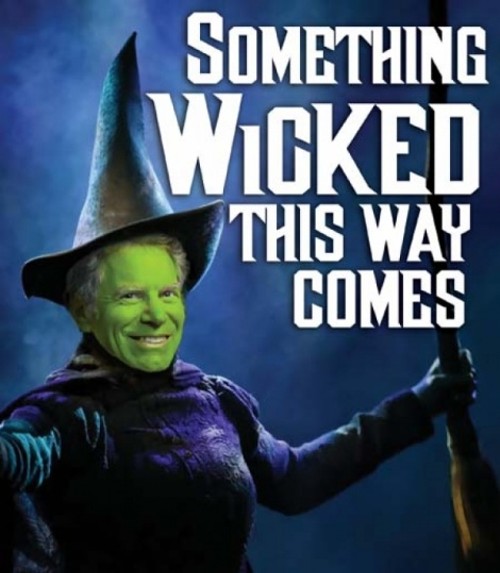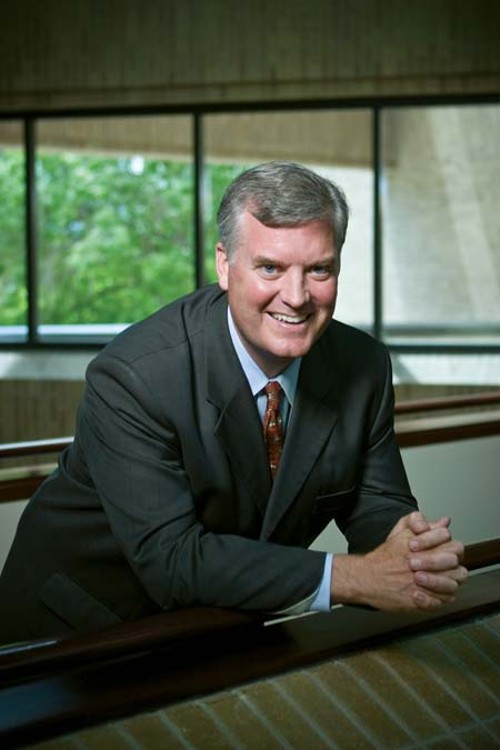Something Wicked This Way Comes
An arts district one block from Temple Square will either save Main Street or become its biggest folly yet.
By Geoff Griffin“I`m a basic philistine when it comes to the arts,” Ralph Becker says, when asked about his vision for a new Broadway theater on Main Street. “When I go around to other cities, I go to performance arts facilities and ask them questions.”
The Salt Lake City mayor´s personal shoe-leather research has given him a clear vision of what he wants downtown to look like in three years. He uses the word “vibrant.” He wants to see streets teeming with locals and visitors, all enjoying “a wide range of culture and entertainment.”
It’s the kind of stock answer you’d expect from a mayor of any city.
But, Becker is willing to be very specific about what he thinks will bring those people downtown. Most notably, Becker wants to build a performing arts center on Main Street between 100 and 200 South, in the old Newspaper Agency Corp. space—a 2,500-seat, stateof-the-art performance space offering first-run Broadway touring shows, pop and rock concerts, as well as performances by local groups such as Ballet West and Utah Opera.
And that’s not all. “Across the street,” Becker continues, “the renovated downtown historic jewel, the Utah Theater, is home to the new Utah Film & Media Arts Center, a cultural cornerstone on Main Street.”
Rob Eddington professes guarded enthusiasm for the project. As proprietor of Murphy’s Bar & Grill at 160 S. Main for the past 11 years, his establishment would be in the thick of things if the plans were to pan out. “I’m glad to see anything happening, even if it is just talk,” he says. “And so far, that’s all it is. But anything to revitalize this part of the downtown area is going to be welcome.”
“I want Salt Lake City to be a major-league town,” Becker insists, and he isn’t talking baseball.
It’s a tall order, and some aren’t so sure it can be achieved without exacting a price— particularly upon existing arts organizations and facilities that are limping along in the current economy. Additionally, the project will need to co-exist within a grand scheme in which the LDS Church exerts a stronger presence downtown through its City Creek project. Most have to ask if government-funded centers for performing arts and indie film will become an extension of Temple Square, or “Temple Sprawl” as some call it, complete with vanilla, family-friendly overtones? Or will a performing arts center breathe life, grit and passion back into downtown’s almost lifeless corpse?
"A major contributor"
No
matter what Becker or others may want for downtown, The Church of Jesus
Christ of Latterday Saints, with its world headquarters and temple
properties spreading across six city blocks, remains downtown’s
foremost landlord. As the proprietor of Utah’s No. 1 downtown tourist
attraction, the developer behind the emerging City Creek Center and the
potential seller of property that would be used for the performing-arts
center, the church has a tremendous interest in the future of a
downtown arts program. To that end, the church gave $100,000 to help
fund Salt Lake County’s study to create an arts master plan.
The
LDS Church declined to give an interview for this article but did
provide the following statement through spokesman Scott Trotter: “The
church is committed to the development of downtown Salt Lake and is in
a unique position to act as a major contributor, along with many
others, to a vibrant, high-quality downtown that will continue to be a
regional destination.”
Again, the word “vibrant.”
Those who walk around in the shadow of Temple Square on a daily basis
may forget that, for visitors, the temple is the international symbol
of Salt Lake City. Scott Beck, Salt Lake Convention and Visitors Bureau
CEO, notes, “There’s a reason why Temple Square is the most visited
location in Utah—it’s not anywhere else.”
And, as such, the church has a need to influence and mold the environment surrounding its cherished symbol. And shouldn’t the church, as “a major contributor” to the downtown area, expect to be part of any conversation regarding arts-center programming performed just two blocks away, especially in light of a recent Pew study that showed 68 percent of Mormons feel their values are often threatened by the entertainment industry?
For a downtown performing arts facility to be truly “vibrant,” it would
stage productions the church likely would frown upon its members
attending. For example, how well would a touring production of Avenue Q—the Broadway
hit that features Sesame Street-like characters discussing sex,
drinking and Internet porn—fare on any conference weekend?
“In all our discussions, [the church has] never mentioned content,” Salt Lake County Mayor Peter Corroon says. “They’ve never once broached the subject.”
Greg Geilmann, director of Kingsbury Hall, can speak to the church’s influence firsthand and says that censorship isn’t the issue. “I don’t think the LDS Church is in the business of shaping programming,” he says. “They’re in the business of telling their membership what to do,” he says, citing an example from a few years ago when the church allegedly got the message out to its membership not to attend a local run of the musical Chicago.
“I understand the Mormon/non-Mormon dynamics of this city as well as anybody,” Becker says. He emphasizes that the downtown arts scene should be a “bridge” between the two groups. He notes that the church’s sphere of influence generally ends around 100 South, especially after it sells the property on Main Street envisioned to be used as the arts facility. He also points out that the church will want to have successful properties surrounding City Creek.
“Their role is just as another member of the community,” Becker says of the church, before going on to add, “That doesn’t mean they don’t have an interest.”
Jason Mathis, executive director of the Downtown Alliance, says that different factors—including the LDS presence—give Salt Lake City a different dynamic than any other place, and that’s something to be emphasized rather than shied away from. “We need to be ourselves and not worry so much about what the rest of the world may think of us,” he says. “As we become more secure about ourselves, the rest of the world will take note.”
When asked if he thought the LDS Church headquarters in close proximity
of an entertainment district on his block would have a chilling effect,
Frody Volgger, owner and chef of the Vienna Bistro at 132 S. Main,
thinks it’s just the opposite: the church will bring more people
downtown, people with cosmopolitan tastes who will want entertainment
and amenities. Once the LDS Church sells its City Creek condos, he
predicts, “most of these people are going to be coming from out of
state, not instate. Those people have more insight about what is going
on around the world.
“Those condos—some of them are selling
for $2 million—are very high end. I think we’re going to get an influx
from other parts of the country and maybe even from the world.”
More by Geoff Griffin
-
A Family New Year
How to ring in 2020 with revelers of all ages.
- Dec 25, 2019
-
The 12 Arts of Christmas
A delightful dozen options for your holiday entertainment needs.
- Nov 27, 2019
-
Season Kickoff
A look at what's new, or old but great, at Utah's ski and snowboard resorts for the winter season.
- Nov 13, 2019
- More »
Latest in Cover Story
Readers also liked…
-
Forget the family pedigree—Robert F. Kennedy Jr should not be the next president of the United States
Trojan Horse
- Jun 21, 2023
-
Women decry harassment and toxic culture at St. George auto dealership
Men at Work
- Oct 11, 2023






